Doctors Break the Silence on the Bladder Problem That Feels Like a UTI That Never Goes Away — and Favors Women Over 50
And the natural remedy that helped Iliana Brockman, 61, avoid bladder surgery and reclaim her health
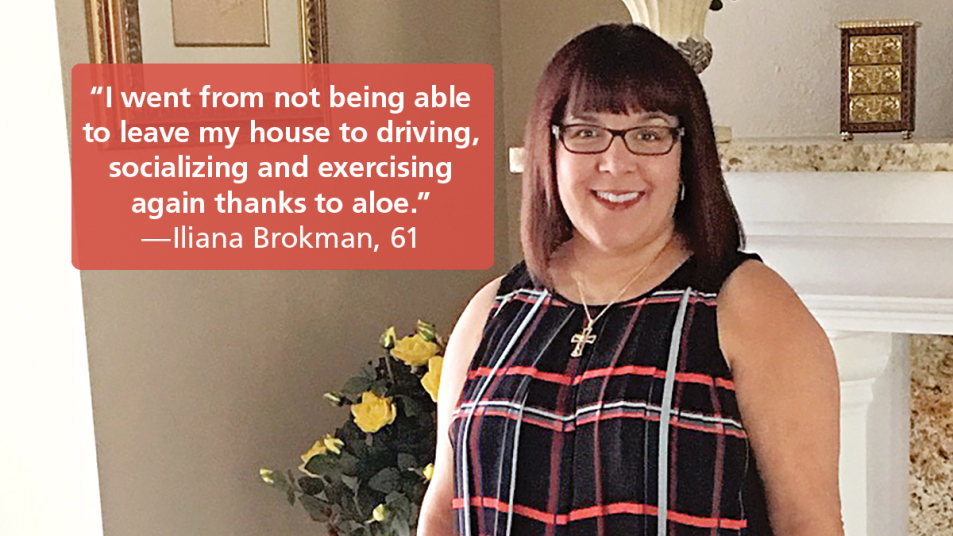
If you’re among the millions of women suffering from interstitial cystitis, a bladder disorder characterized by intense discomfort, you may have struggled for years to find the right treatment. For some, the answer may lie in a surprisingly simple home remedy: Aloe vera. Read on to learn more about this tough-to-manage condition and discover why doctors say the humble aloe plant is one of nature’s best natural interstitial cystitis treatment options.
What is interstitial cystitis?
Interstitial cystitis/bladder pain syndrome (IC/BPS) is a chronic bladder condition that causes pelvic pressure and pain for 3 to 8 million US women. Though the exact cause isn’t fully understood, the pressure and pain is thought to stem from irritation and inflammation of the bladder lining, explains Mickey Karram, MD, a urogynecologist with Visthetic Surgery Institute and MedSpa in Beverly Hills, CA. That can make the nerves in the bladder lining extra sensitive, leaving many with IC in near-constant discomfort.
While any woman can suffer from interstitial cystitis, research shows women in their 50s are the most likely to be affected. “Some studies suggest that hormonal changes, especially those associated with menopause, may play a role in the development or exacerbation of symptoms,” explains Dr. Karram.
Symptoms of interstitial cystitis
IC feels a lot like a urinary tract infection (UTI) that doesn’t go away. The difference is that UTI symptoms tend to start suddenly, and typically go away when you take antibiotics to clear the infection, Dr. Karram explains. With IC, on the other hand, “symptoms can last for months or years,” Dr. Karram says. (Learn about how to get rid of a UTI and other common female bladder problems.)
If you have IC, you might experience:
- Pelvic pain that can feel like a deep ache or a sharp stabbing
- Constant feeling of pressure or fullness in your lower abdomen or bladder (like you have to pee) that temporarily goes away after urinating
- Burning or stinging sensation while urinating
- Frequently needing to urinate, even though only small amounts come out. Some women with IC may use the bathroom up to 60 times a day
- Pain during sex
Symptoms of IC might not hound you 24/7. But even after easing up, they’ll likely keep coming back, Dr. Karram says. Especially when you’re stressed, after you’ve been sitting for a long time, during exercise, or during intercourse.
Many women with IC also have other chronic pain disorders that aren’t directly related to bladder health (and vice versa), though experts don’t fully understand why. In fact, University of Maryland research found that up to 50% of patients with IC may have at least one other pain disorder. “Some patients may also have co-occuring fibromyalgia, chronic fatigue syndrome, irritable bowel syndrome and/or migraines,” explains Stephen Walker, PhD, Professor of Regenerative Medicine and Urology at the Wake Forest Institute for Regenerative Medicine in Winston-Salem, NC. (If you suffer from migraines, too, click through for the best migraine self-care remedies.)
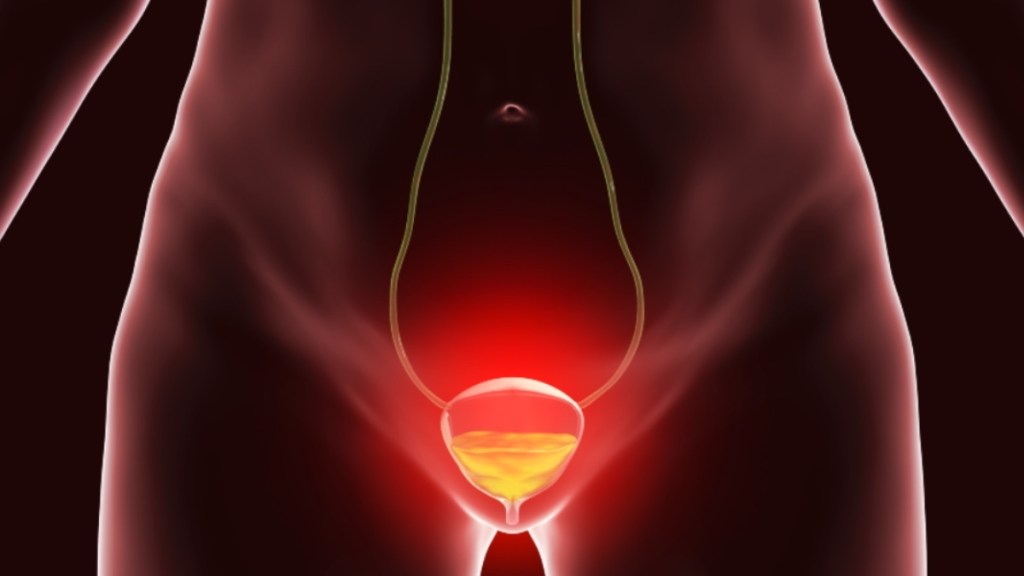
Diagnosing interstitial cystitis
Pinpointing IC can be tricky. “It’s essentially a diagnosis of exclusion,” Dr. Walker says. “The urologist will first test for other possible conditions that could explain the symptoms. Once they’ve all been ruled out, you may be left with a diagnoses of IC/BPS.” Your doctor might start out by testing your urine for a UTI, which is caused by a bacterial infection, Dr. Karram explains. If that test comes back negative, your doctor may recommend a cystoscopy to look at the inside of your urethra and bladder.
By doing this, they can check for conditions like bladder cancer or endometriosis, which may be marked by bladder ulcers, redness, or swelling. They can also take tissue samples of your bladder during the cytoscopy, which can confirm a diagnosis like bladder cancer. Once your doctor has confirmed that none of those problems are the culprit, they may diagnose you with IC.
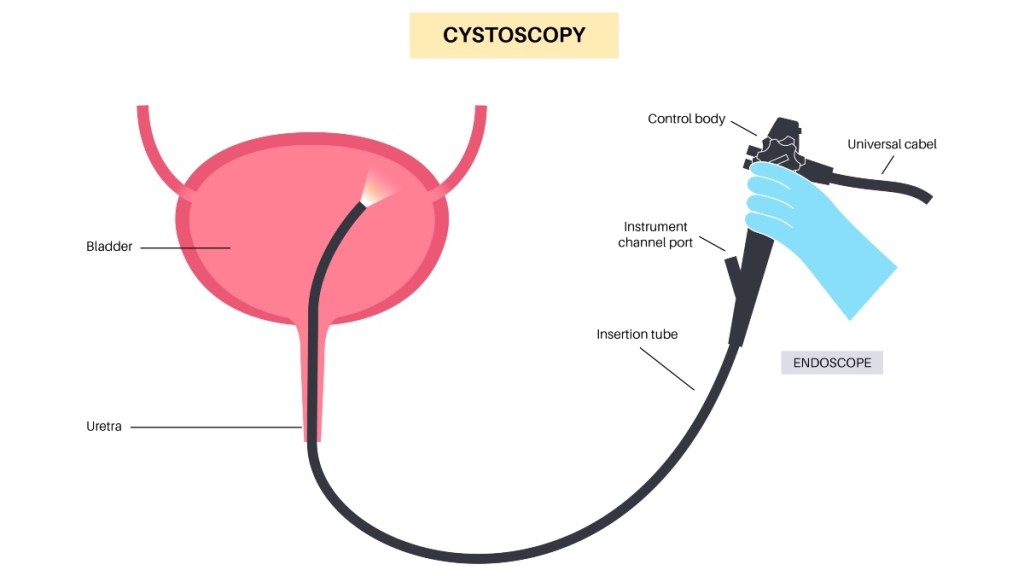
Traditional interstitial cystitis treatment options
It’s no surprise that the chronic pelvic pain and frequent trips to the bathroom mean that “interstitial cystitis patients are pretty desperate for anything that might give them relief,” says Dr. Walker. Medications like over-the-counter pain relievers or antihistamines (which block the inflammatory compound histamine) can help ease pain and inflammation caused by IC. Other medications can be instilled directly into the bladder via a catheter at your doctor’s office to numb the bladder or encourage the bladder lining to heal.
But “the effectiveness can vary from person to person, and some people may experience side effects,” Dr. Karram says. Aside from causing discomfort, bladder instillations can leave an unusual garlicky odor or taste in your mouth or irritate your skin. And long-term pain reliever use can increase the risk for gastrointestinal problems, Dr. Karram explains.
Interstitial cystitis natural treatment options
If you’d prefer to try natural interstitial cystitis treatment options first, avoiding certain foods and drinks that irritate the bladder lining can make a noticeable difference, Dr. Karram says. Nearly 96% of people with IC say their symptoms are triggered by citrus fruits, tomatoes, coffee, tea, carbonated or alcoholic drinks, spicy foods, and artificial sweeteners, a University of South Florida study found. Scaling back on this type of bladder-irritating fare can ease inflammation that triggers pain and urinary urgency.
Another smart interstitial cystitis self-care treatment option: Supplementing with natural aloe vera. Nearly 88% of women who took Desert Harvest freeze-dried, oral aloe vera capsules for 3 months experienced less pelvic pain and pressure and less urination frequency, found a study presented at the Proceedings of the NIDDK Scientific Symposium. “Aloe contains glycosaminoglycans, which are thought to restore the barrier provided by cells of the bladder that come in direct contact with the urine,” Dr. Walker explains. This helps reduce painful inflammation and irritation.
Dr. Walker is currently conducting a larger clinical trial on aloe vera for IC that’s set to begin in January 2024 to understand more. But he’s already a believer in trying aloe as a natural self-care treatment option for those with interstitial cystitis. “For some, these treatments clearly change the dynamic,” Dr. Walker notes.
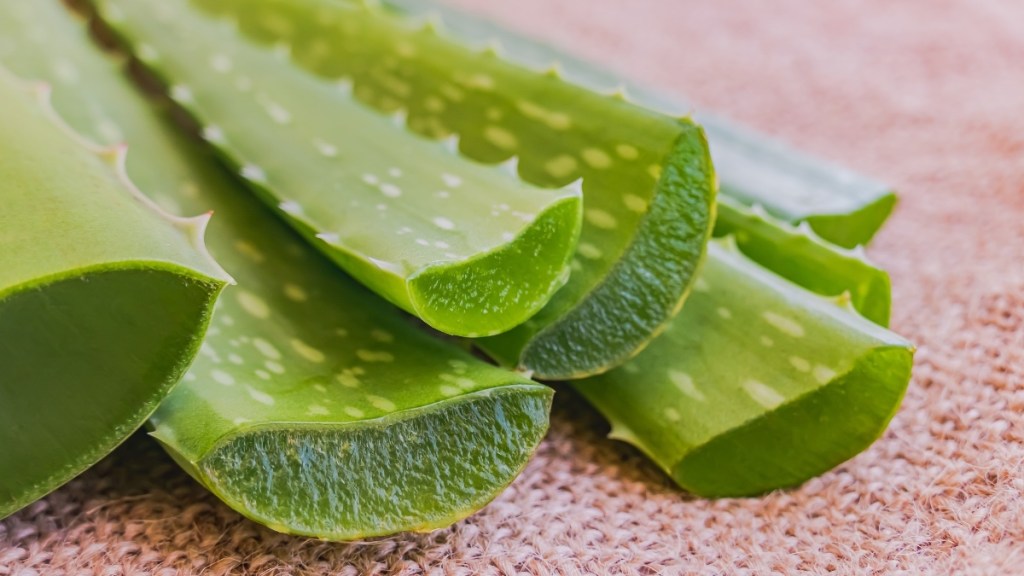
Supplementing with aloe for IC
If you’d like to give aloe a try for your interstitial cystitis, Dr. Walker recommends Desert Harvest Freeze-Dried Aloe, which is an organic, highly purified aloe vera product made without pesticides, herbicides, or fillers. “Purified aloe vera is safe,” Dr. Walker says. “This is one of those alternative treatment options that is non-invasive and safe to use.” The supplement used in the study: Desert Harvest Super-Strength Freeze-Dried Aloe Vera Capsules (Buy from Desert Harvest, $36).
More ways aloe vera improves your health
Turns out the benefits of aloe don’t stop easing interstitial cystitis symptoms (or sunburn, for that matter!). While women with IC should talk to their doctors before adding aloe juice to their daily diet, there are three more key ways aloe can improve your health.
1. Aloe revives a sluggish thyroid
When your thyroid isn’t function at its peak (a common problem among women over 50), you can feel fatigued and foggy. Luckily, aloe can help! Drinking 2 oz. (about ¼ cup) of food-grade aloe vera juice on an empty stomach when you awake boosts thyroid function 49%. And the benefits start to kick in within three months. So say researchers reporting in the Journal of Clinical and Translational Endocrinology, who explain that compounds in aloe help convert thyroid hormone into its active, energizing form. Tip: Start with 1 tsp. before bed and work your way up to the full dose to avoid aloe’s potential laxative effects. (Click through for more aloe vera juice benefits when it comes to thyroid health.)
2. Aloe soothes GI upset
Sipping 1 oz. (about 2 Tbs.) of pure, food-grade aloe vera juice twice daily eases GI pain by up to 93% and reduced gas by up to 92%, suggests a study in the Journal of Research in Medical Sciences. “Aloe boasts compounds that reduce inflammation, soothe pain and improve muscle contraction in the GI tract,” explains Gary Null, PhD, author of The Complete Encyclopedia of Natural Healing. To get the benefits, sip the aloe straight or mix with your favorite fruit juice.
3. Aloe eliminates heartburn
With more than 200 active compounds that dial down inflammation in the esophagus and increase the body’s production of acid reflux–fighting digestive enzymes, aloe is a top heartburn remedy. Researchers reporting in the Journal of Ethnopharmacology found sipping 1/3 oz. (about 2 tsp.) of food-grade aloe vera juice twice daily slashed heartburn episodes by 76% in four weeks. That’s an effect that was better than the acid-reducing drugs ranitidine and omeprazole. (Click through to see the meds that make acid reflux worse and what to do about it.)
Make your own aloe mixer
While you can find food-grade liquid aloe at supermarkets and health stores, making your own is quick and easy. Simply wash 1 large aloe leaf (you can find them in the produce section), then cut it into 2-inch pieces and soak it in water. When the leaf has softened, scoop out the clear gel inside. Add the aloe to smoothies, or blend it with sparkling mineral water and a squeeze of lime for an aloe spritzer.
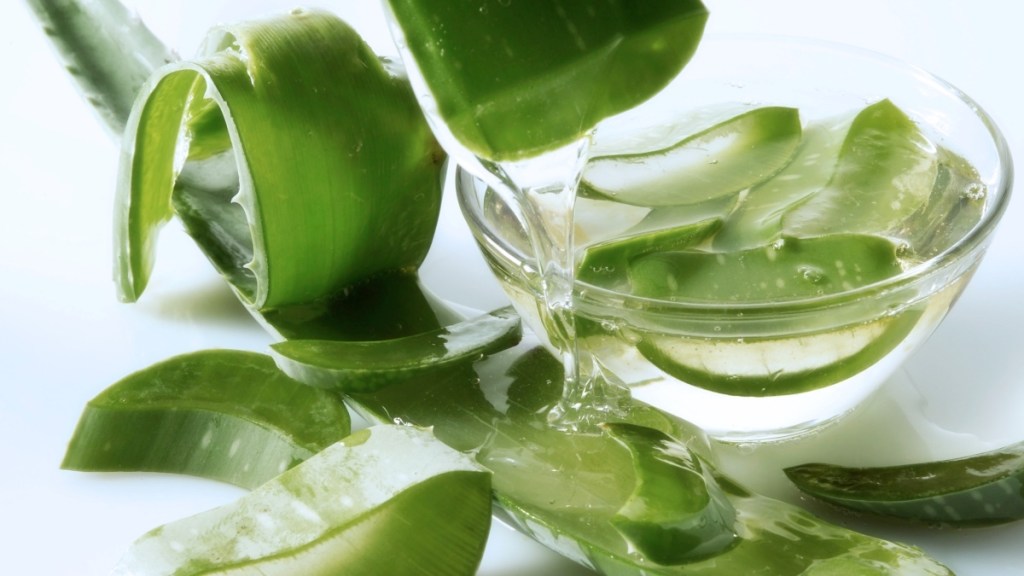
Make your own aloe vera juice
Prefer to sip straight aloe vera juice? You can make your own at home! Wash 1 large aloe leaf, then trim sides to remove thorns and remove the top peel. Cut the clear gel inside into 1-inch cubes and remove from lower peel. Discard all of the peel, which is toxic. Place 6-8 cubes of aloe in a blender with 6 cups of water and blitz until smooth. Flavor it with a squeeze of fresh lemon or lime juice, if desired, then store the mixture in the fridge. Freeze leftover aloe vera cubes for future use.
Interstitial cystitis success story: Iliana Brockman, 61

“This is so painful, it feels like someone poured acid on my bladder,” Iliana Brockman told her husband. “I rush to the bathroom every five minutes!” For months, the Lutz, Florida, resident had been plagued by a burning sensation and urgent need to urinate. After a slew of fruitless doctor’s visits, there seemed to be no relief in sight.
At first, she’d been diagnosed with a bladder infection. “You’ll feel better in three days,” one physician had assured her. But after rounds of antibiotics, Iliana’s symptoms persisted. A visit to a urologist had yielded another diagnosis: interstitial cystitis (IC). The chronic condition causes pelvic pain, bladder pressure and frequent urination. Iliana’s specialist prescribed a daily medication, which had helped at first. But after taking it for a few months, Iliana began experiencing fatigue, nausea and lack of appetite.
Why Iliana sought a natural treatment for her interstitial cystitis
“It’s horrible,” she told her new doctor, sharing all that the condition had taken from her, from her social life to her career. Iliana couldn’t even join her husband for long drives on the weekends, as the vibration made her bladder pain worse.
Luckily, the doctor identified the cause of Iliana’s new symptoms, but the news was dire: The medicine that was helping her bladder was also elevating her liver enzymes. “You need to stop this drug immediately,” the doctor warned. But when, at a loss for solutions, he recommended removing Iliana’s bladder, she knew she needed another option. That can’t happen, she resolved. I have to find another way!
How aloe finally healed Iliana’s IC — without surgery
Desperate for help, Iliana reached out to the Interstitial Cystitis Association (ICA). A patient advocate there suggested she try concentrated aloe pills. The plant extract is packed with anti-inflammatory compounds. Plus, it increases the body’s production of glycosaminoglycan that help the bladder lining repair itself.
Full of hope, Iliana began taking Desert Harvest Aloe Vera Capsules two at a time, three times a day. And in one month, the fiery feeling in her bladder began dissipating and her trips to the bathroom decreased. Within three months, Iliana had cut down to taking four pills a day. “I feel 95% better!” she rejoiced to her husband, joining him on a ride into town to celebrate.
After thousands of dollars spent on medication and medical tests, Iliana was elated to find that the aloe capsules made her IC symptoms virtually disappear. Today, she takes two capsules a day and has been able to live a full life. “I went from not being able to leave my house to driving, socializing and exercising again!” the 61-year-old beams. “I’ve even become a patient advocate for the ICA. It’s amazing to have my health back and be able to help others too!”
For more ways to outsmart bladder bothers:
Doctors Weigh In on The Best Natural Solutions for Female Bladder Problems
Top MDs: Common Prescription Medications Cause Bladder Leakage — How to Get Relief
“Pelvic Floor Massage Stopped My Embarrassing Bladder Leaks — For Good!”
This content is not a substitute for professional medical advice or diagnosis. Always consult your physician before pursuing any treatment plan.












